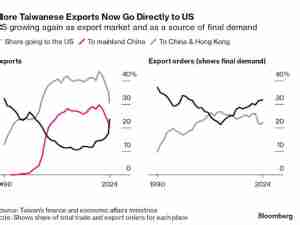Wheat slid the most since May and corn prices tumbled to an eight-month low after a deal aimed at enabling shipments from Ukraine’s Black Sea ports was reached.
Ukraine and Russia signed parallel pacts with Turkey and the United Nations Friday. A deal to restart grain exports from Ukraine’s ports, which have been paralyzed by Russia’s invasion, would help ease grain costs and avert a global food crisis.
Wheat in Chicago sank 5.9% to settle at $7.59 a bushel, the lowest level since early February. While prices have erased the gains following Russia’s war on Ukraine, they are still much higher than usual for this time of the year. Corn lost 1.6% to settle at $5.6425, a level not seen since November.
Millions of tons of grain are stuck in Ukraine after Russia’s invasion blocked its major ports. While a small volume has been rerouted by road and rail, customers in the Middle East and North Africa have been forced to look elsewhere, pushing up prices and worsening food insecurity.
The deal will allow safe passage of Ukraine grain cargoes, with a control/inspection center located in Istanbul staffed by officials from all sides, Arlan Suderman, chief commodities economist at StoneX, said in a note. “Russia, of course, still needs to uphold its end of the bargain by not firing on said ships or attack opened up ports, with the war raging on as intensely as ever.”
For JPMorgan Chase Bank & Co., the initiative “falls short” of expectations to open all of Ukraine’s Black Sea ports, notably the key grain port of Mykolaiv, which is not included, with active conflict nearby, Tracey Allen and Ruhani Aggarwal wrote in a note.
A normalization of Ukrainian export flows would likely require a peace deal to move grain and oilseeds from farm to port, they said. “With some 10 million tonnes of wheat and 5 million tonnes of corn exports resulting from this initiative, and serious weather risks ahead, global grain markets appear immensely oversold.”
Between supply from EU and Black Sea exports against demand from Middle East and Northern Africa, there’s still a gap of more than 25 million metric tons, said Walter Kunisch, senior commodity strategist for Hilltop Securities Inc. Also, there are many questions as to how much Ukraine can export materially in the next three to six months, which will depend on the amount held at ports, the quality of the stock, and other issues like insurance, he said.
Soybeans gained 1.1%, boosted by an outlook for a return to drier weather in the western Midwest in August, a time when crops need moisture.
Sugar Falls
Raw sugar extended its week’s rout to 7.1%, the biggest one-week slide since April 2020. Recent weakness in the currency of Brazil, the top supplier, has spurred growers to sell as harvests ramp up.
Gasoline futures are also down since reaching records in June. A drop in gasoline makes cane-based ethanol less attractive, eroding demand for the alternative fuel in Brazil and prompting mills to make more sugar. The country cut gasoline prices this week, and speculation is that Petroleo Brasileiro SA may do so again soon to tame elevated inflation.









